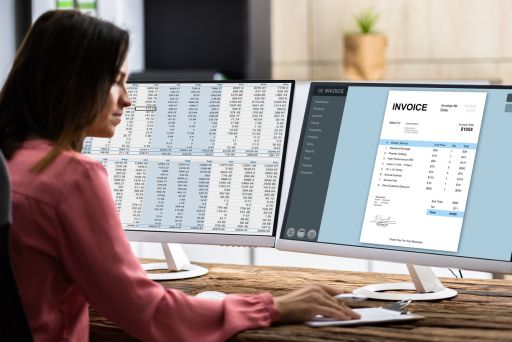In the realm of business management, accountants and bookkeepers play integral roles, ensuring the effective management of financial transactions and data. Their contribution goes beyond mere number-crunching, extending to the meticulous handling of financial records and generating financial statements that provide a comprehensive view of a company’s economic health.
Differentiating Roles and Responsibilities of Accountants and Bookkeepers in a Small Business
Accountants and bookkeepers hold distinct yet complementary roles within the financial ecosystem of a small business. Understanding their unique functions is crucial for effective financial management and decision-making.

Accountants
Certified Public Accountants (CPAs), in particular, possess advanced credentials, having undergone rigorous training and passing the CPA exam. They focus on offering strategic financial guidance and are authorized to conduct audits, provide attestations, and offer specialized advisory services. CPAs leverage their expertise to analyze financial data, make financial forecasts, and ensure compliance with complex tax laws. They play a pivotal role in making critical financial decisions that impact a business’s future.
Accountants in small businesses take on a more strategic and analytical role. Their responsibilities encompass broader financial analysis and decision-making based on the data provided by bookkeepers. In a small business setting:
Analyzing Financial Data: Accountants interpret and analyze the financial data prepared by bookkeepers. They delve deeper into the numbers to derive meaningful insights that aid in decision-making.
Preparing Financial Statements: Accountants use the information compiled by bookkeepers to create detailed financial statements like income statements, balance sheets, and cash flow statements. These statements offer a comprehensive view of the business’s financial health.
Financial Forecasting and Planning: They play a pivotal role in forecasting future financial trends, identifying potential risks, and devising strategic plans to optimize the business’s financial performance.
Ensuring Compliance and Tax Preparation: Accountants ensure that the business complies with tax laws and regulations. They prepare and file tax returns, leveraging their expertise to minimize tax liabilities while ensuring adherence to legal requirements.
Bookkeepers
Bookkeepers, on the other hand, are primarily responsible for recording financial transactions and maintaining financial records. Their role is pivotal in the accounting process as they meticulously record and categorize daily transactions, ensuring accuracy in the financial documents. They manage the day-to-day financial aspects of a business, handling tasks such as managing payroll, recording expense receipts, and reconciling bank statements.
Bookkeepers are the backbone of financial record-keeping. Their responsibilities primarily revolve around the day-to-day financial transactions and maintaining accurate financial records. In a small business setting:
Recording Financial Transactions: Bookkeepers meticulously record and classify daily transactions such as sales, purchases, receipts, and payments. This involves ensuring that each transaction is accurately documented and categorized in the accounting system.
Maintaining Financial Records: They manage the general ledger, keeping track of accounts receivable, accounts payable, and other financial accounts. This ensures that the business has an up-to-date and organized record of its financial activities.
Utilizing Accounting Software: Bookkeepers often leverage accounting software to streamline their tasks. They input data, reconcile accounts, and generate basic financial reports like income statements and balance sheets.
Managing Payroll: In many instances, bookkeepers handle payroll tasks, ensuring that employees are accurately compensated, taxes are withheld, and payroll-related taxes are remitted on time.

Collaboration Between Accountants and Bookkeepers
The synergy between accountants and bookkeepers is crucial for the effective management of a business’s finances. While bookkeepers focus on recording transactions and maintaining accurate financial records, accountants utilize this information to prepare crucial financial statements such as the balance sheet and the income statement.
Accountants then use these statements to generate financial reports, providing insights that aid in making informed decisions regarding a business’s financial forecasts and long-term strategies. Their collaboration ensures that the financial information is accurate and compliant with regulations set forth by regulatory bodies like the Internal Revenue Service (IRS).
Bookkeeping and Accounting Processes
Both bookkeeping and accounting processes rely on specialized tools and software to streamline operations and enhance accuracy. Accounting software has become an indispensable tool, automating various tasks and simplifying the recording of financial transactions.
Small business owners benefit significantly from utilizing accounting software, as it eases the burden of managing their financial records and enables them to generate detailed financial reports efficiently.
Importance of Qualified Professionals
The expertise of a qualified accounting professional cannot be overstated. Whether it’s a certified public accountant or a certified public bookkeeper, their knowledge and understanding of financial transactions and reporting standards ensure the accuracy and reliability of a business’s financial statements.
Similarly, bookkeepers with the appropriate credentials possess the necessary skills to maintain precise financial records and uphold the integrity of a business’s financial data.
Impact on Business Operations
Effective accounting and bookkeeping practices have a direct impact on a business’s ability to secure business loans and manage its cash flow. Lenders and stakeholders often rely on accurately prepared financial statements and reports to assess a company’s financial health before extending credit or making investments.
Moreover, during tax season, accurate tax returns prepared by competent accountants ensure compliance with tax laws, minimizing the risk of penalties or audits by regulatory bodies. Both accountants and bookkeepers ensure that a business maintains organized financial records, providing a clear trail for any internal audits or inquiries.
Career Paths and Future Trends
The role of accountants and bookkeepers continues to evolve, adapting to technological advancements and changing financial reporting standards. Automation through sophisticated accounting software has streamlined many accounting tasks, emphasizing the need for professionals to acquire skills in data analysis and interpretation.
Moreover, the demand for professional accountants and bookkeepers is anticipated to rise, especially in the realm of small businesses seeking expertise in managing their financial transactions and making informed financial decisions.

Conclusion
In the intricate world of business, the contributions of accountants and bookkeepers are indispensable. From meticulously recording daily transactions to crafting comprehensive financial reports, these professionals ensure that a business’s financial records are not just accurate but also strategically utilized to drive the company’s success. As the landscape of accounting and bookkeeping evolves, the role of these professionals remains fundamental in guiding businesses through their financial journey.
Whether it’s managing payroll, offering financial guidance, or ensuring compliance with tax laws, the expertise of these professionals serves as a cornerstone for a business’s financial stability and growth. Hence, investing in qualified accountants and bookkeepers is not just a choice but a necessity for any business aiming for sustainable success.
Remember, the collaboration between accountants and bookkeepers is the bedrock upon which a sound financial structure is built, enabling businesses to thrive and make informed financial decisions.







































